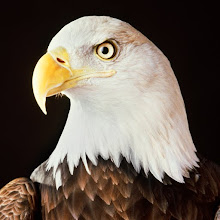Vinland...
The couple who live near the entrance to this park has provided not only security and a peaceful atmosphere but is a wealth of knowledge about the area.
A methodical researcher, Neil Vinding from Denmark believes that the sheltered bay at Bellevue Beach, was where the Vikings brought in their “knarr” around the spit from Trinity Bay. Here they found tall mature spruce trees mixed with maple, birch and oak. They could be used to build boats. (Trees of such stature are not available in Greenland). With further exploration large quantities of wild grapes were located. Many trips were made arriving empty and departing with hardwood and grapes. Leif Eriksson named the area where he found the grapes, Vinland.
The researcher concluded that a ballast would have been needed for their trip from Greenland when they had no cargo. He arrived at a fairly exact description of a ballast stone, which would yield maximum weight in the narrow space between a knarr's bottom and floor, stay in place even in very rough weather, and not be heavier than what two men could carry when it was taken onboard or thrown overboard. The stones would be thrown overboard when the knarr would be loaded with valuable wood.
There would likely be forty or more ballast stones close together where they had been thrown, near the low tide mark.
He and his wife pinpointed the northeast corner of the lagoon, behind the highest point of the sandbar toward Trinity Bay. Here they began to search and among thousands and thousands of stones, one that appeared to be a ballast stone was found. Clearly this stone had been worked on by man and matched perfectly the predicted size and shape. All of the other stones nearby were rounded by the sand and other rocks as they were moved by the sea. No second ballast stone could be found. The researcher decided that they may be in deeper water or buried by the sand. A piece was chipped off the stone and sent to Denmark for analysis. Unfortunately this research did not prove or disprove his theory.
This type of stone, basalt, which may very likely be found in Greenland – but could be from Newfoundland as well. If only one more similarly shaped stone could be found, credence would be added to his theory.
There would likely be forty or more ballast stones close together where they had been thrown, near the low tide mark.
He and his wife pinpointed the northeast corner of the lagoon, behind the highest point of the sandbar toward Trinity Bay. Here they began to search and among thousands and thousands of stones, one that appeared to be a ballast stone was found. Clearly this stone had been worked on by man and matched perfectly the predicted size and shape. All of the other stones nearby were rounded by the sand and other rocks as they were moved by the sea. No second ballast stone could be found. The researcher decided that they may be in deeper water or buried by the sand. A piece was chipped off the stone and sent to Denmark for analysis. Unfortunately this research did not prove or disprove his theory.
This type of stone, basalt, which may very likely be found in Greenland – but could be from Newfoundland as well. If only one more similarly shaped stone could be found, credence would be added to his theory.
In the photo, Jannich is sitting beside the ballast stone that was found.

Our Photo album
-
-


1 Comments:
There are similar shaped large rectangular stones which appear ro be man made, strewn in a haphazard pattern, with some toppled over each other perpendicularly, on the sandy ocean floor, submerged in around 18-20 ft of water approximately 200-300 feet offshore from Hoss Cove, McCarthy's Point, Bellevue, TB. Some local fishermen have commented on these strange structures which form clusters, suggesting that they may not be the result of random geological processes but result from intentional human deposition or perhaps a shipwreck. I am sure that future underwater surveys would reveal interesting findings.
Post a Comment
<< Home